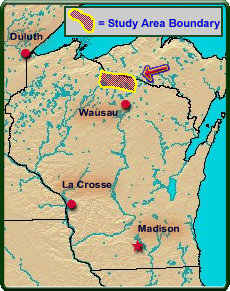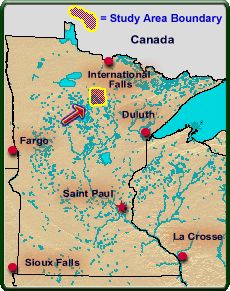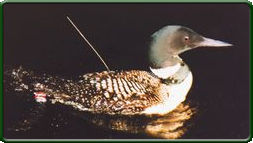Using Implanted Satellite Transmitters to Identify Common Loon (Gavia immer) Migration Routes, Staging Areas, and Wintering Range
|
Radio telemetry has been used for more than 35 years to study the survival, behavior, movements, and physiology of birds. However, attempts to attach telemetry transmitters externally on common loons (Gavia immer) have not been successful. Recent advances in implant techniques and transmitter miniaturization now provide a promising alternative. Biologists with the Upper Midwest Environmental Sciences Center, the Minnesota Department of Natural Resources, and BioDiversity, Inc., have refined implant methods for studies of the common loon. In 1996, we began developing a satellite transmitter configuration for adult loons that would allow us to identify important migration routes, staging areas, and the location of wintering grounds of birds that breed in the north central United States.
Adult common loons were captured in August 1998, in association with ongoing state research projects in northern Wisconsin and Minnesota. Six loons were captured and radio-marked with satellite transmitters in Wisconsin (3) and Minnesota (3) in 1998. |
 |
 |
|
|
Lakes and impoundments within Indiana, Ohio, Kentucky, Tennessee,
and North Carolina were used during fall migration. Wintering ground
distribution of marked birds included both the Atlantic and Gulf
Coasts. The project was completed in March 2001. Principal Investigator: Kevin Kenow Related link:
|
|
Page Last Modified: April 3, 2018


